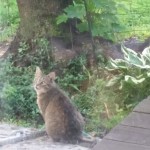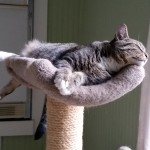It’s been almost a year since my last post, and I can’t believe how different my work life is from one year ago. It’s not something I would ever have predicted, and, frankly, my mind is still reeling with the changes at almost nine months into pandemic restrictions.
At this time a year ago, I was just finishing my required class on technology for information professionals. The final project for that class was to create your own website on the Simmons server, which I then transferred over to my own domain. I loved having a website that actually had content and photos and that showed what I was doing in my job – it was pretty fantastic (even if my web skills are a bit amateurish). But today I had to face the fact that my website was a snapshot in time of how I did my job pre-pandemic, and that it no longer reflected the reality of my work life.
Under the “projects” page on my website, I talked about all the great things that I had as goals for myself for 2020: applying for an LSTA Mind in the Making grant to upgrade the children’s room playspaces; adding great new stations to the once-monthly sensory playtimes; and coming up with descriptive materials in multiple languages to better serve storytime attendees who are not native speakers of English.
And now? There are no children in the children’s room, not since March 13, and thus no need to upgrade playspaces. Indeed, when we reopen (and who knows when that will be) there won’t be any play materials out in order to limit surfaces that need cleaning and to help everyone maintain social distancing.
Sensory playtimes feel like a sweet memory of an innocent time when parents and children from multiple families could be in an enclosed space together (the story room), playing with shared materials like rice tubs and water tables and oobleck. Sensory playtimes were hip and happening a year ago, and there were so many awesome new stations that I looked forward to adding to that program; now, though, I don’t anticipate being able to run a sensory playtime again for a very long time, if ever.
And the goal of making in-person storytimes more accessible to all attendees also seems like something from a more innocent past. The sad fact of the virtual storytimes that I now offer is that they are actually more limiting and less accessible to all: children with hearing impairments, for instance, are not well-served by a storytime on video. Those young children can’t read captions, and I can’t wear the teacher microphone that connects to the child’s hearing aid or cochlear implant. Parents who are non-native speakers of English cannot be provided with handouts at the time of the storytime that explain the order of the lesson and the purpose of each lesson part. Nor, frankly, do I have the time right now to come up with such handouts, since my workload has at least doubled, if not tripled, with the addition of curbside service provision.
There have been so many pivots in my job in the last nine months that I feel a bit dizzy. There’s the technology I’ve had to master: Zoom, Facebook Premiere, YouTube, Screencast-o-Matic, Adobe, Canva, Beanstack, Google Forms, and I know there are others that I’m forgetting to list. I’ve had to first learn how to do storytime in a virtual format, and then how to use a camcorder and HDMI converter to live stream a higher quality of video (it took a surprisingly long time for me to figure out the camcorder dilemma). Summer reading had to become a completely virtual experience, with curbside pickup of the limited prizes that we could afford. To save money on prizes, I had to learn how to make giant lawn pinwheels, and then spent hours this summer assembling 114 of those pinwheels. Book groups have gone virtual, and have expanded to include 1st and 2nd graders and adults. Other programs have fallen by the wayside, like the weekly game hour, because those programs don’t translate well to a virtual format.
And almost all of my patron interactions now take place via email, rather than in person. Where I used to walk around the room with a child reader recommending books by putting the books into their hands for them to assess – now I fill paper curbside bags with books that I hope they’ll like, and then set the bags out for pickup. Some parents will send me photos or anecdotes about their children’s reactions to the books in the bags, which brightens my days but isn’t quite the same as talking to a child in person. The best parts of my days used to be interacting with kids and their caregivers; now I work in a very lonely isolation in an empty, joyless children’s room. Though I’m technically an introvert, I also thrive on human interactions (I think of myself as a workplace extrovert), and I’m finding that there is nothing sadder for me than a children’s room with no one in it but me. It’s just a room now, not a children’s room.
And this doesn’t even touch on the misery of wearing a mask forty hours a week, nor the stress of doing curbside duty each day when there is always at least one patron (usually more) who will come up to me without a mask on. Talk about feeling powerless and vulnerable.
I know I’m not alone in feeling blue right now, and I know that things are far, far worse for many people – for those who have lost a loved one, those who are suffering from long-term effects of COVID-19, those who have lost their jobs, their homes, their livelihood, those who have fallen into depression, those who are trying to juggle working from home and supporting their children who are doing remote learning…the list goes on and on and on.
All I can do for now is to continue to try to do my job as best I can, and to try to support others who are struggling as best I can. It’s not much, but it’s something.







